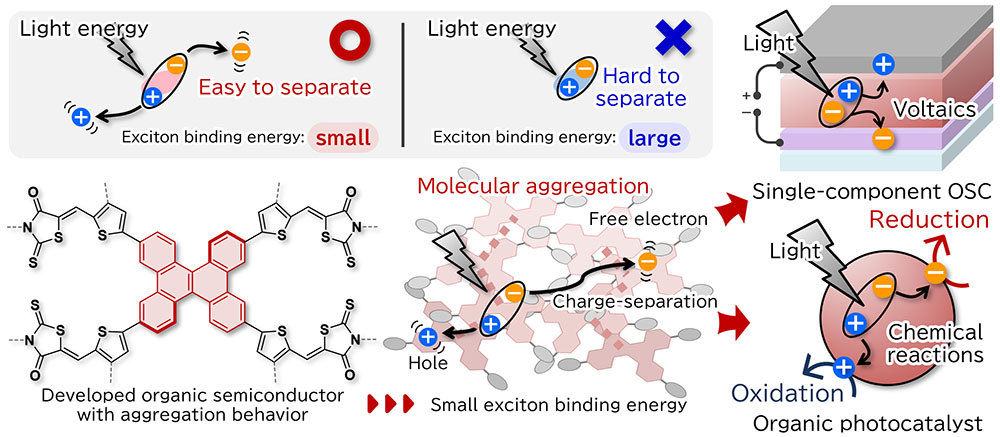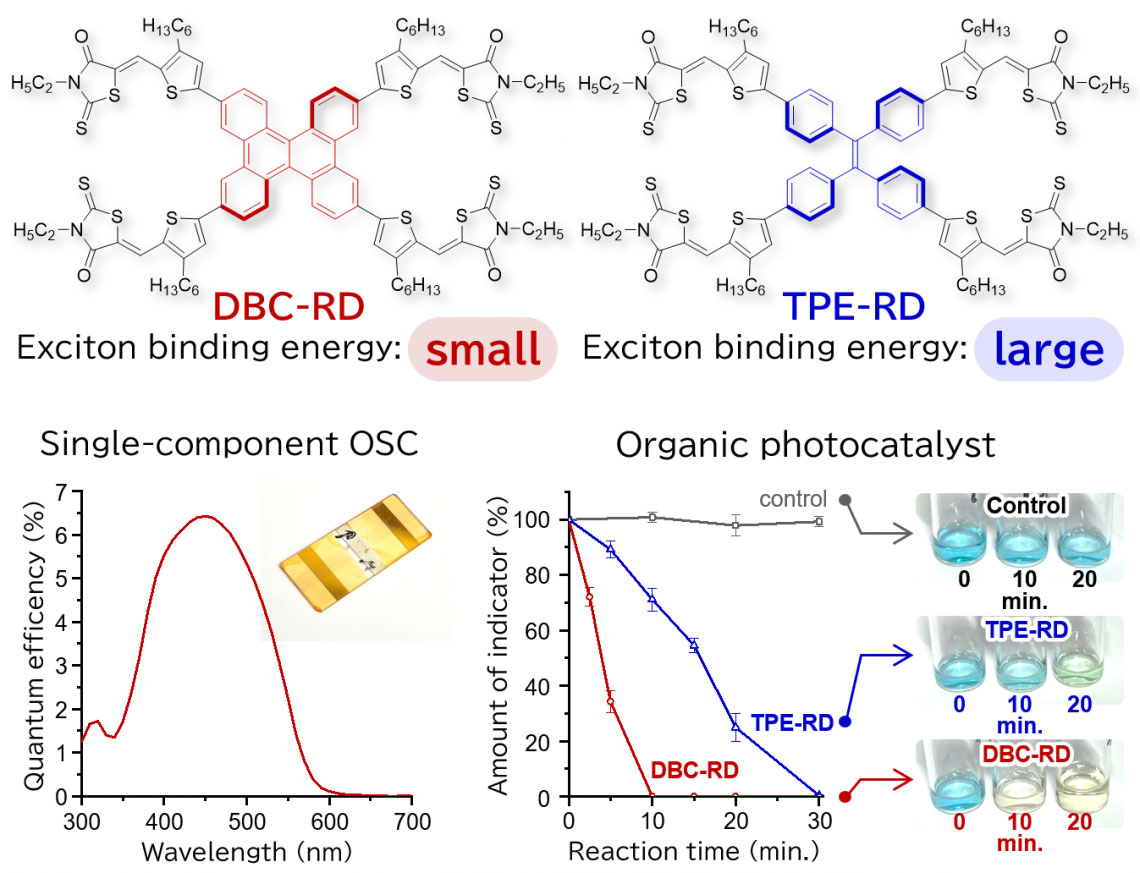| Aug 06, 2024 |
Stacking molecules like plates improves organic solar device performance
|
|
(Nanowerk News) Harnessing the power of the sun is vital for a clean, green future. To do so, we need optoelectronic devices, like solar cells, that can convert light into electricity efficiently. Now, a team led by Osaka University has discovered how to further improve device efficiency: by controlling how light-absorbing molecules stack together.
|
|
Their findings are published in Angewandte Chemie, International Edition ("A Dibenzo[g,p]chrysene-Based Organic Semiconductor with Small Exciton Binding Energy via Molecular Aggregation").
|
 |
| Overview of the stackable organic semiconductor and its uses in this study. (Image: Osaka University)
|
|
Organic optoelectronic devices, such as organic solar cells, are becoming increasingly sought after for their inherent advantages, e.g., flexibility or light weight. Their performance depends on how well their light-absorbing organic molecules convert light energy into ‘free-charge carriers’, which carry electric current. The energy needed to generate the free-charge carriers is referred to as ‘exciton-binding energy’.
|
|
The lower the exciton-binding energy, the easier it is to generate free-charge carriers, and thus the better the device performance. However, we still struggle to design molecules with low exciton-binding energy in a solid state.
|
|
Upon deeper inspection, the research team found that the exciton-binding energy of solid materials is affected by how their molecules stack together, which is referred to as aggregation.
|
|
“We synthesized two types of similar star-shaped molecules, one with a flexible center and the other with a rigid center,” explains lead author Hiroki Mori. “The individual molecules behaved similarly when they were dispersed in a solution, but quite differently when they were stacked together in thin solid films.”
|
|
The difference in behavior is due to the rigid molecules stacking together well, like plates, whereas the flexible molecules do not. In other words, when in a solid state, the rigid molecule has a much lower exciton-binding energy than the flexible molecule. To verify this, the team built a single-component organic solar cell and a photocatalyst using each molecule. The solar cell and photocatalyst made of the rigid molecule showed impressive performance because their low exciton-binding energy led to a high generation of free-charge carriers.
|
 |
| Molecular structures of the organic semiconductors (top), the performance of the single-component organic solar cell using the stackable molecule (left), and the performance of both heterogeneous organic photocatalysts (right) (Image: Osaka University)
|
|
“Our findings, that making molecules that aggregate well can decrease the exciton-binding energy, are really exciting,” says senior author Yutaka Ie. “This could provide us with a new way to design more efficient optoelectronic devices.”
|
|
The team’s findings show that the interaction between molecules in a solid is important for device performance, and that the design of molecules for high-performance optoelectronic devices should look beyond individual molecular properties. This new way of decreasing exciton-binding energy could underpin the driving mechanisms and architecture of the next generation of optoelectronic devices.
|


